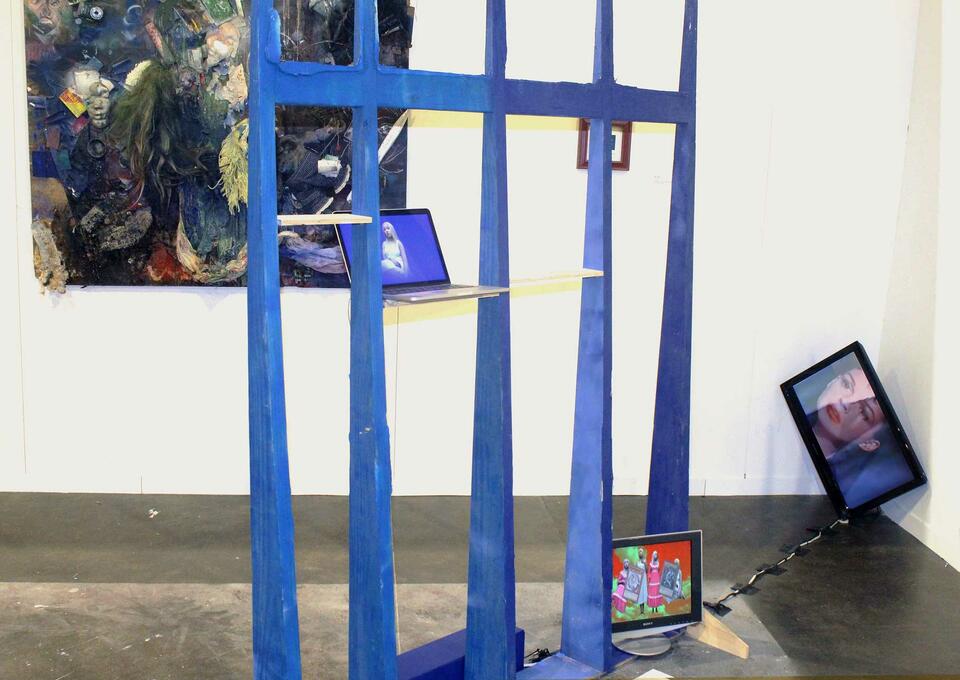Olivia Newroz
Settling Dust, Unsettling Ground
Settling Dust, Unsettling Ground centers around dust as a material system that blurs the line between ground and atmosphere. While this blurriness is visualized at both the particle and planetary scales, at the 1:1 scale it becomes less evident. By developing an “environmental model”–that is, a model that doesn’t merely simulate phenomena like dust, but rather produces the underlying force itself (Moffitt, 2023: 8)–I produced visualizations of how dust operates at a human scale with the aim of “uncoupling” ground “from the physical and conceptual strangleholds of [the] merely solid" (Zee, 2022: 183.)
The dust chambers used for scientific study are often scaled up in order to reduce wall effect–a practice Jerry Zee likens to Borge’s map (Zee, 2022)–with the aim of re-creating atmosphere. Instead, I’m interested in a dust machine that operates atmospherically, in “exchanges and dissipations” rather than through “frictionless passage” (Engelmann, 2015: 433). While computer simulations are focused on quantifying dust, or developing pollution mitigation measures, and engineering models are often used to test objects against dust’s corrosive effects, the Dust Machine, as an architectural model, speaks to both the affective qualities of dust, as well as dust as material with agency (Barad, 2007; Bennett, 2010). This is also where the dust machine departs from a wind tunnel; dust is used as a visualization tool as well as a material that shapes the forces being produced in the machine.
Image
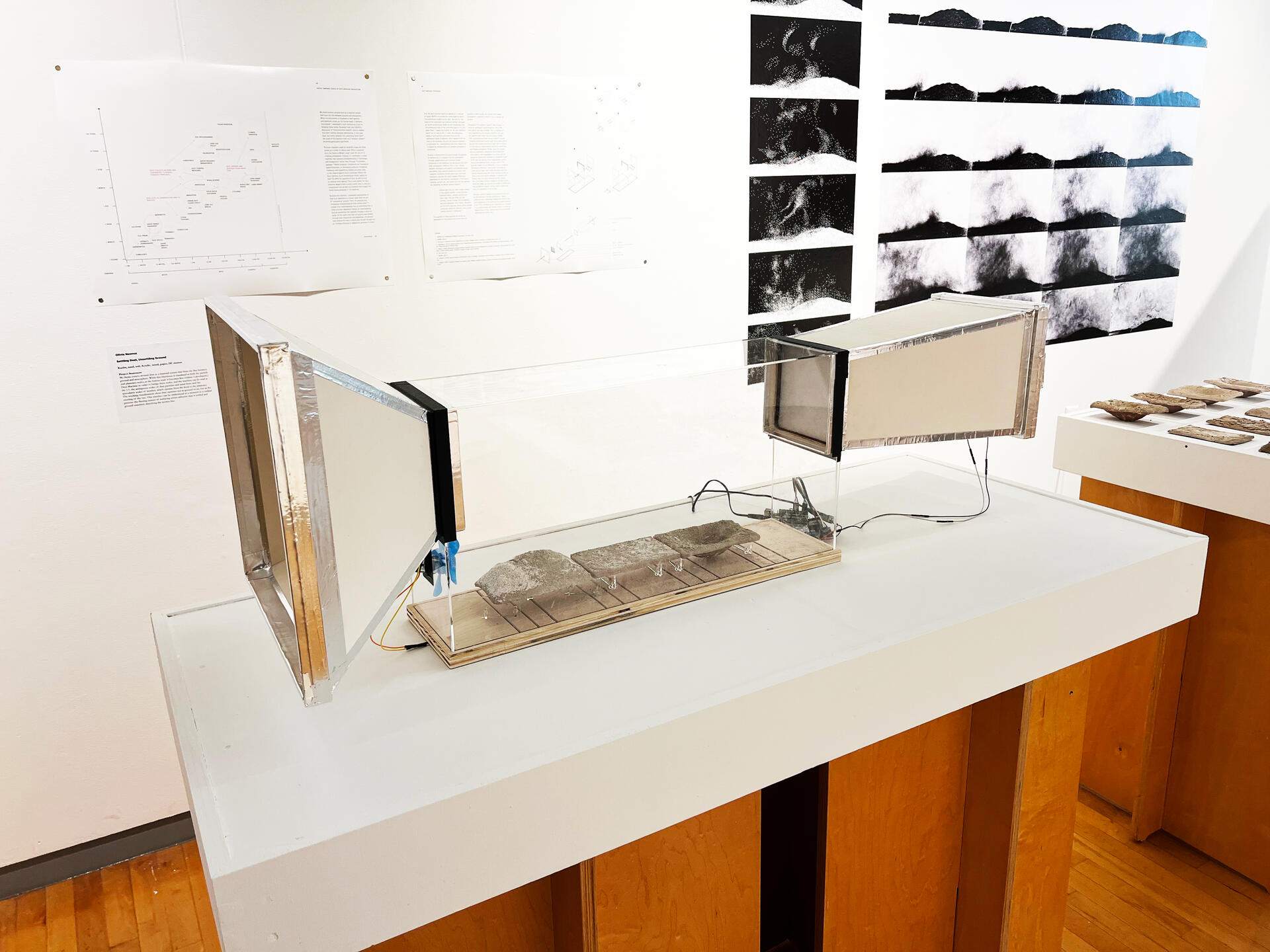
Iteration 7 of the Dust Machine
I produced visualizations of how dust operates at a human scale. At the same time that the ground was altered through both dissolution and deposition, the ground itself altered the way in which dust moved through the air, thereby affecting re-deposition patterns. It is here that the dust machine begins to operate on a new set of scales. Moffitt articulates the scales at which “environmental models can be read…the one-to-one...the scale set by the...model; and the ambiguous scale of the controlled space of air and water flow” (Moffitt, 2023: 8). I adapt this slightly for the dust machine, which can be read at the 1:1, the ambiguous scales of particles and wind flow, and the speculative scales of weather, which operate from the local to the planetary. As such, the machine becomes a framework for understanding how dust shapes and is shaped by unpredictable and unstable atmospheric conditions.
Image
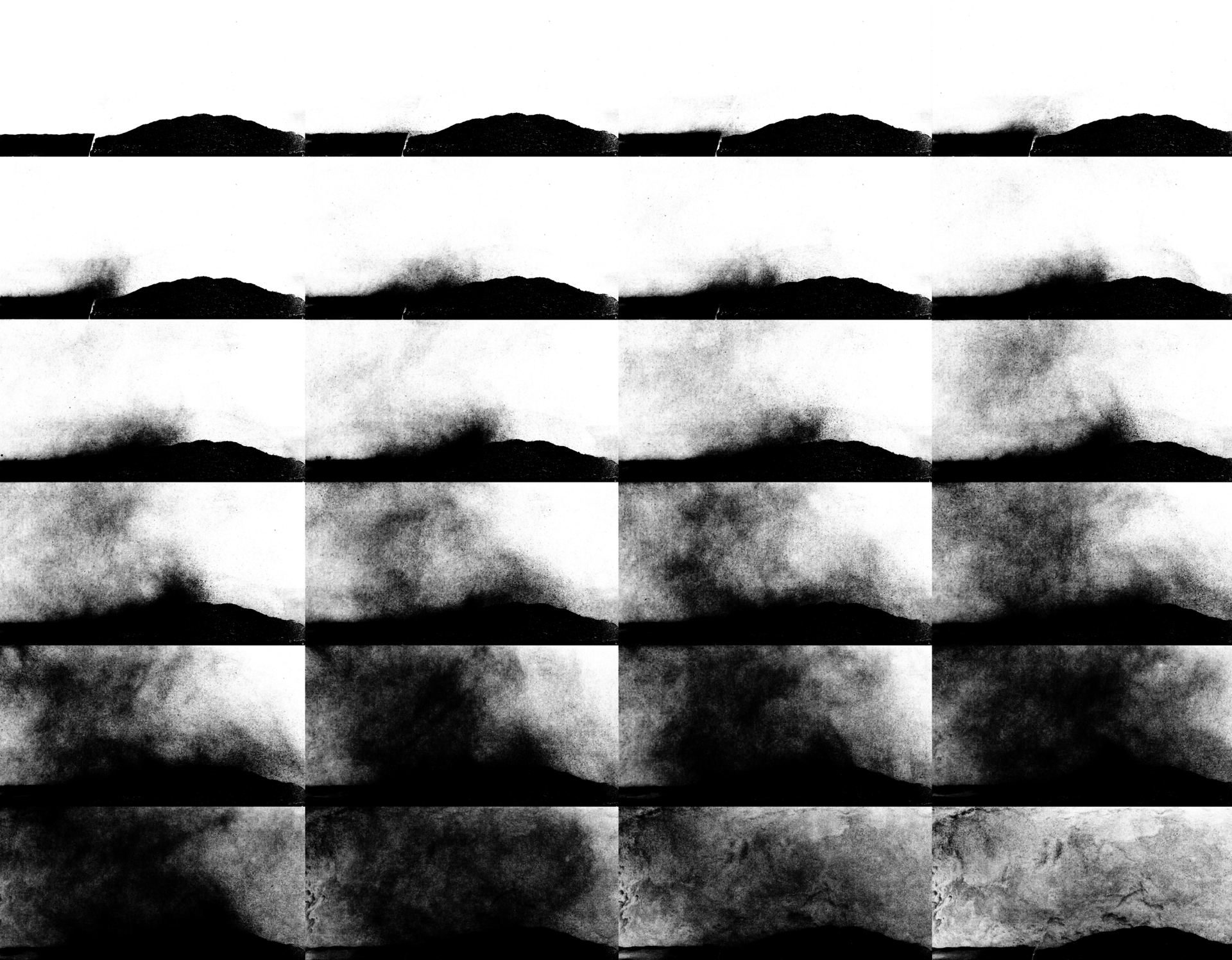
Dust Machine visualizations
Ground is transformed into dust through the weathering of the surface; it is brought into the atmosphere through upward drafts and turbulent eddies, interacting at the molecular and particulate level with other atmospheric elements. This, in turn, creates weather conditions with specific and localized causes and effects. Dust particles absorb and scatter solar radiation, contribute to both warm and cold cloud formation and alter the earth’s albedo differently, depending on the chemical composition of the source material, particle size, and where and how the particles are deposited.
Image
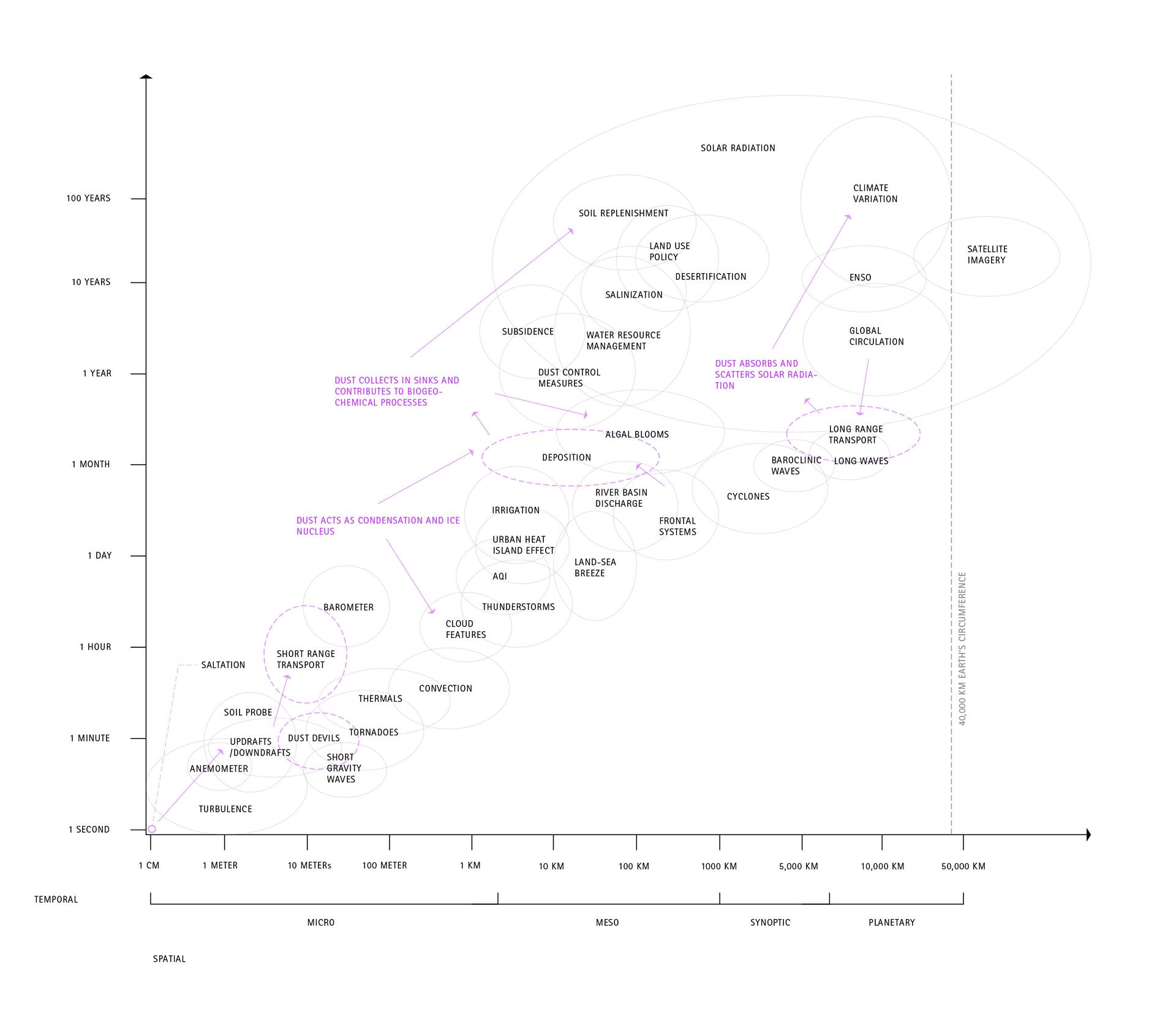
Spatio-Temporal Scales of Dust-Weather Interaction
Using the carazas test as a precedent, I abstracted ground conditions into a matrix, with topography, mix-ratios, and the saturation-desiccation processes as parameters. Each of the tiles has varying micro topographies, surface texture and adhesion levels. As such, each of the grounds shapes the air differently, in turn re-shaping the ground differently.
Image
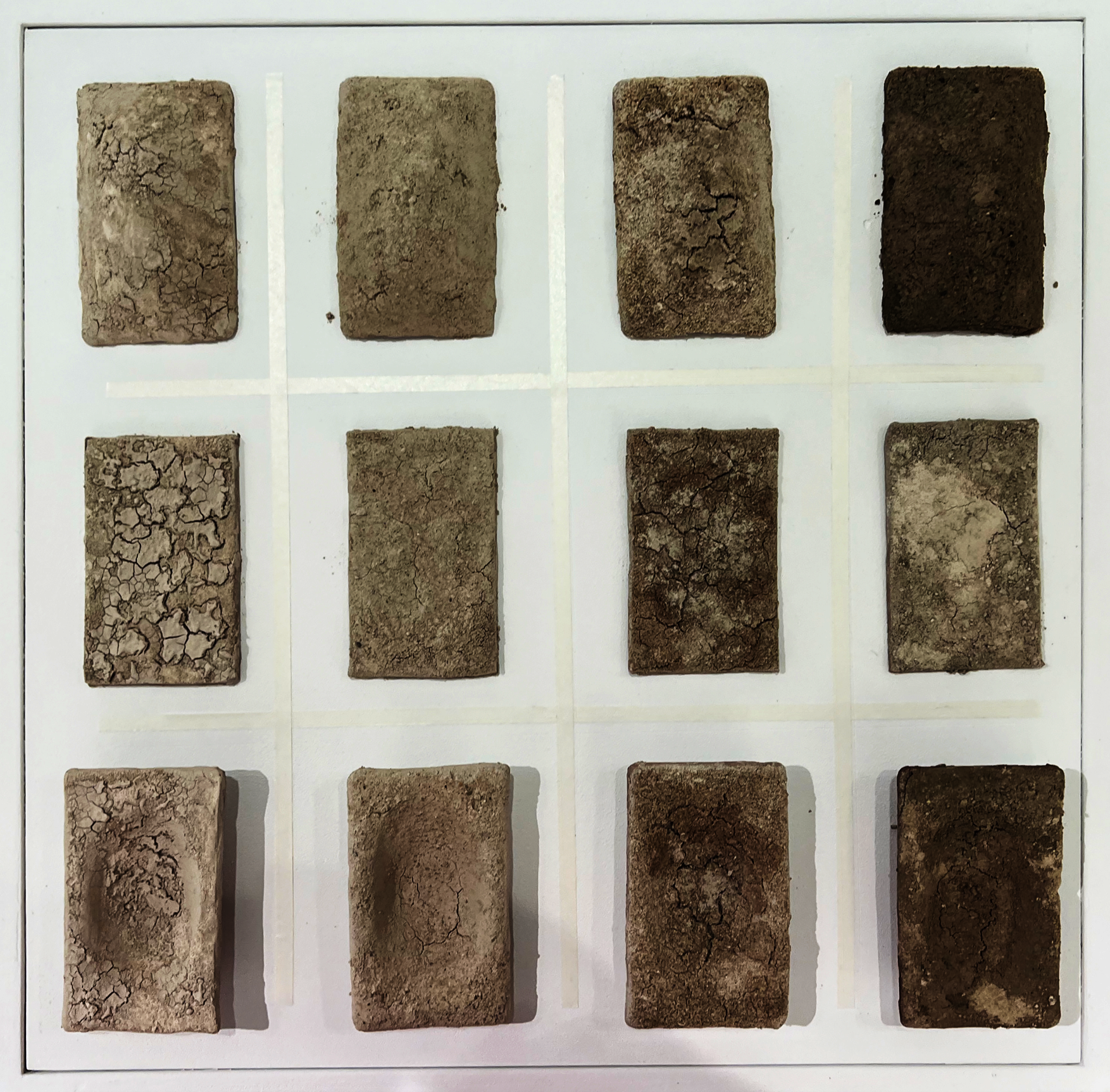
Earthen tiles constructed out of kaolin, sieved soil and sand
Heavy kaolin tiles begin to crack and pull apart after being saturated and dried, leaving exposed areas with looser particles as well as dried crusts with greater adhesion. In samples with heavier sand, the sand creeps across the surface, but is not made airborne, dislodging the finer grains which are swept up, causing the surface to deflate and leaving behind a coarser surface, which shapes how dust is re-deposited on the surface.
Image
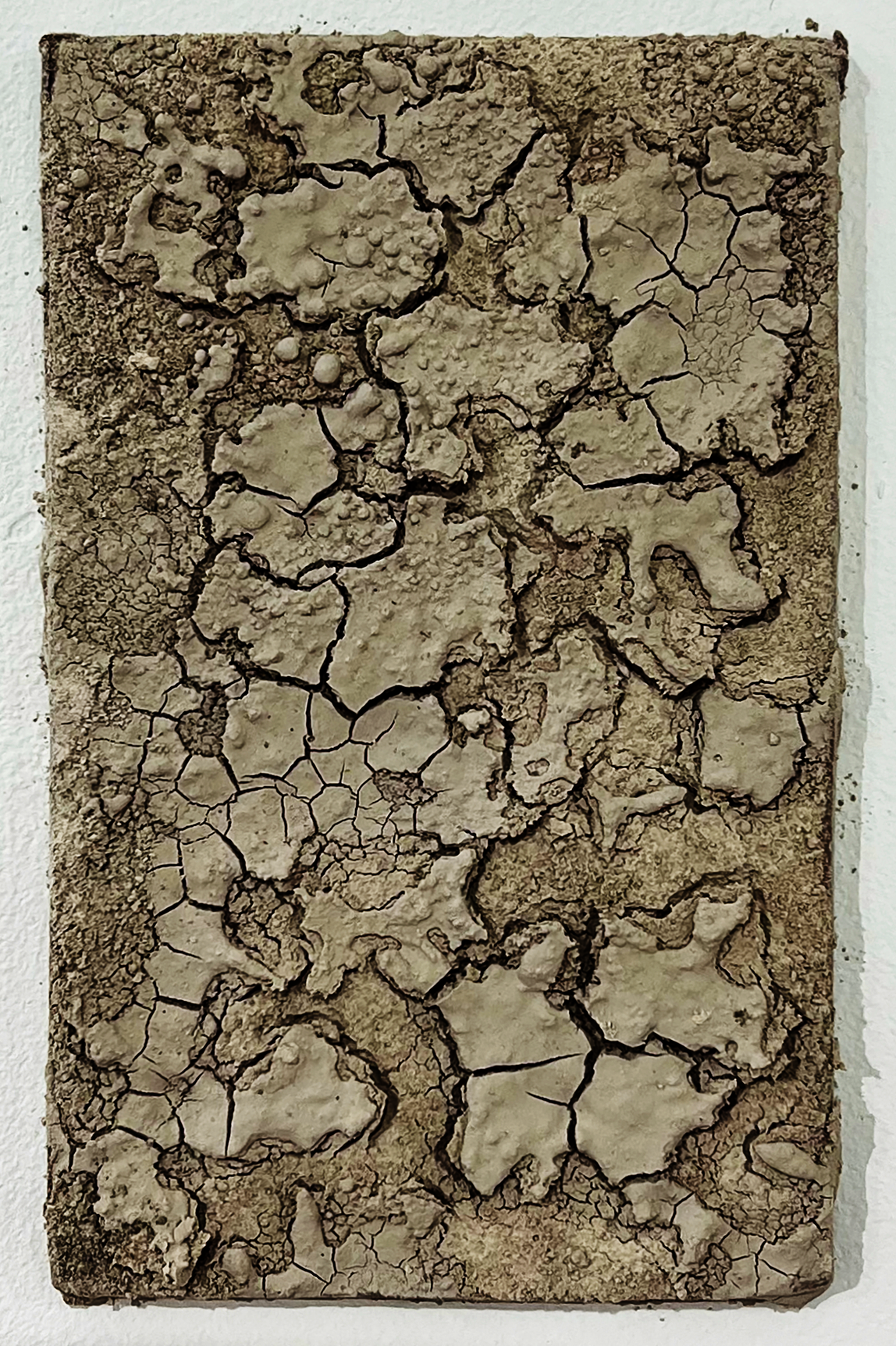
Kaolin heavy tile showing cracking and pulling
EXHIBITION IMAGES
